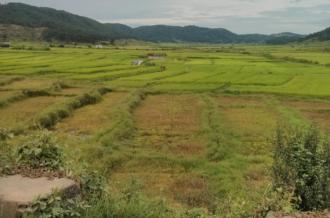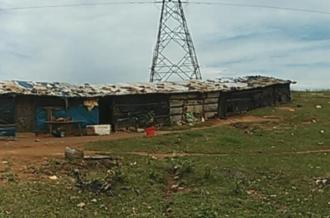With a whiff of controversy and not a bikini in sight, a US-educated
business graduate was selected as the first Miss Universe contestant to
represent Myanmar in more than 50 years.
Moe Set Wine will take her place on stage at the global beauty pageant in Moscow next month, reflecting dramatic political and social changes in the former junta-ruled nation, which last fielded a Miss Universe contender in 1961.
"I feel like now I am part of the history and I feel like a soldier that is doing something for the country and my people," the 25-year-old said after her selection late on Thursday.
Hemlines are rising in the country formerly known as Burma as it opens up to the world after decades of iron-fisted junta rule ended in 2011.
But still not everyone approves of scanty dress.
When racy shots of one model wearing a two-piece swimsuit appeared online a few years ago, she received abuse and threats.
So the Miss Universe hopefuls were careful not to bare any midriff in the swimsuit section.
"My personal view is that the competition presents a good image of our country, but if you look at what they wear, it is not what a lot of people here like," Deputy Culture Minister Than Swe told AFP.
Myanmar's traditional dress, which is still mandatory in high schools, universities and most state workplaces, is the demure "longyi" -- a sheet of cotton or silk cloth wrapped around the waist and stretching to the feet.
But the younger generation, especially young urban women, are increasingly shunning the national garb and embracing unconventional alternatives as they brush aside concerns about morals and modesty.
"Myanmar people dared not wear clothes like this in the past. Now things are improving, and people dare to wear things, so as a designer I can create what I like. So I'm glad things are changing," said Htay Htay Tin, who designed all the contestants' outfits.
Moe Set Wine will take her place on stage at the global beauty pageant in Moscow next month, reflecting dramatic political and social changes in the former junta-ruled nation, which last fielded a Miss Universe contender in 1961.
"I feel like now I am part of the history and I feel like a soldier that is doing something for the country and my people," the 25-year-old said after her selection late on Thursday.
Hemlines are rising in the country formerly known as Burma as it opens up to the world after decades of iron-fisted junta rule ended in 2011.
But still not everyone approves of scanty dress.
When racy shots of one model wearing a two-piece swimsuit appeared online a few years ago, she received abuse and threats.
So the Miss Universe hopefuls were careful not to bare any midriff in the swimsuit section.
"My personal view is that the competition presents a good image of our country, but if you look at what they wear, it is not what a lot of people here like," Deputy Culture Minister Than Swe told AFP.
Myanmar's traditional dress, which is still mandatory in high schools, universities and most state workplaces, is the demure "longyi" -- a sheet of cotton or silk cloth wrapped around the waist and stretching to the feet.
But the younger generation, especially young urban women, are increasingly shunning the national garb and embracing unconventional alternatives as they brush aside concerns about morals and modesty.
"Myanmar people dared not wear clothes like this in the past. Now things are improving, and people dare to wear things, so as a designer I can create what I like. So I'm glad things are changing," said Htay Htay Tin, who designed all the contestants' outfits.






 That's essentially what
That's essentially what 








